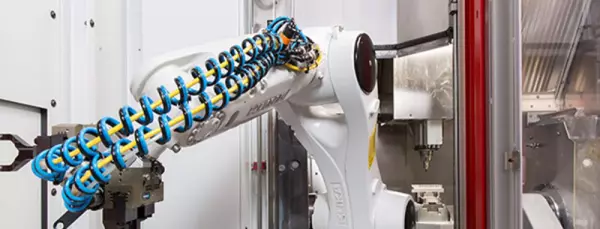
Of course, there are special requirements for implant production, especially when it comes to larg...
Portal and digital medical technology fair of the largest MedTech cluster in Germany

This article provides an overview of the fundamental attributes of non-active surgical implants and proposes rules based on the potential of these devices. These rules may be used to determine optimum physiological functions and improve standards of care for non-active surgical implants. The purpose of this review is to provide a better understanding of these implants and help the medical community evaluate them more effectively. The goal of this research is to provide an overview of the different types of non-active surgical implant systems available and to provide guidance on the use of these devices in surgery.
BS EN ISO 14630 is an international standard that outlines the general requirements of non-active surgical implants. This standard applies to a limited set of implant types, such as hip joints, arterial stents, and dental restorative materials. It is also intended to be totally inserted into the body and remain in place after the surgical procedure, typically for 30 days. As long as it meets these requirements, it is considered a non-active device.
The International Standard for Non-active Surgical Implants specifies a general requirement for non-active surgical implants. However, this standard does not apply to dental implants, dental restorative materials, or transendodontic or transradicular implants. This standard also includes safety requirements for the materials used in manufacturing and sterilization of the implant, as well as information provided by the manufacturer. To meet the requirements, the implant must pass a number of tests. Further testing is included in Level 2 and 3 standards.
NASIs have a variety of levels of quality. For example, Level 1 of the European Standard covers general requirements for non-active surgical implants, while ISO 14061:2012 specifies particular requirements for certain families of these implants. The third level specifies specific quality attributes for certain types and is intended to facilitate communication between surgeons and engineers. It also allows surgeons to inspect the model and size it against a skeleton model, which is especially useful when the skeletal anatomy of the patient has abnormalities.
The potential of non-active surgical implants can be defined as the extent to which the implant's qualities are present. This is crucial for determining the suitability of an implant and its safety. Moreover, the NASIs should be able to perform their function without causing adverse effects to the patient. The maximum possible potential of a non-active surgical implant is the most desirable outcome. This means that these non-active surgical implants can help improve patients' lives.
To be labeled as non-active surgical implants, a non-active implant must be manufactured in accordance with the standard EN ISO 14630. Its performance is not dependent on electrical energy or a power source, but instead relies on gravity to function. In addition to this, it must be single-use. In addition, it must be labelled as such. If the implant is multi-purpose, it must be labeled as such.
Become a digital exhibitor yourself in the online portal of the largest and best-known MedTech cluster region in Germany and inform the world of medical technology about your products and services as well as about news, events and career opportunities.
With an attractive online profile, we will help you to present yourself professionally on our portal as well as on Google and on social media.